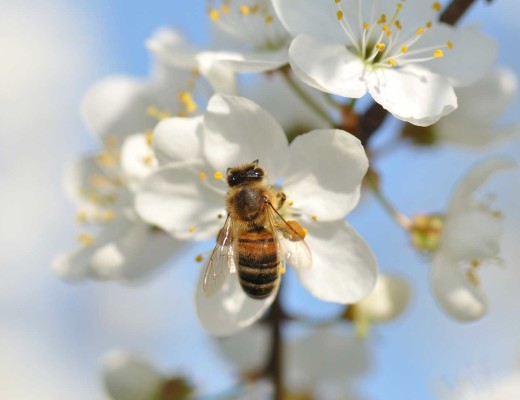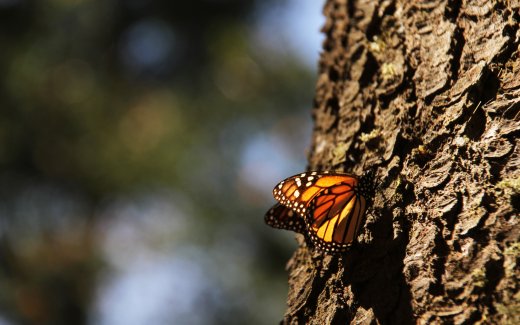Rain refreshes the land and nourishes the green landscape, and all things that grow suffer when we lack rainfall, as areas that are currently experiencing or have just recently experienced drought can attest. But when that long-awaited rain does pour down, particularly when it’s not a gentle sprinkle, but a torrent of water, the benefits may not always be as great.
![runoff_diagram[1]](http://arbordayblog.org/wp-content/uploads/2014/05/runoff_diagram1.jpg) Wait–rain is rain, right? Shouldn’t it help equally wherever it falls?
Wait–rain is rain, right? Shouldn’t it help equally wherever it falls?
Well, in areas where houses, stores, schools, roads and parking lots spread, the natural tree cover is lost, and so too is the absorbing effect of vegetation and soil. Without the benefit of trees and vegetated infrastructure, welcome rain becomes costly stormwater runoff—rushing through gutters and pipes following a storm, as oils, heavy metal particles and other harmful substances are washed into rivers and lakes. Fish and wildlife suffer, drinking water becomes expensive or impossible to reclaim, property values are reduced, and our living environment is degraded.
Luckily, something can be done to make the most of the precious rainfall, helping to maximize its benefits to all: planting trees and preserving existing trees.
Leaves and bark of a tree retain a huge amount of water, allowing some of it to evaporate and some to more slowly reach the ground. How exactly do they do it? Several ways:![stormwater-runoff_fazio[1]](http://arbordayblog.org/wp-content/uploads/2014/05/stormwater-runoff_fazio1.png)
-Intercept falling rain and hold a portion of it on the leaves and bark. Part of this intercepted water will evaporate and part will be gradually released into the soil below.
-At the surface of the soil, fallen leaves help form a spongy layer that moderates soil temperature, helps retain moisture, and harbors organisms that break down organic matter and recycle elements for use in plant growth. This important layer also allows rain water to percolate into the soil rather than rushing off carrying with it oil, metal particles and other pollutants.
-Below ground, roots hold the soil in place and absorb water that will eventually be released into the atmosphere by transpiration.
-Through the collective action of leaves and the anchoring and absorbing effects of roots, trees also contribute to soil stabilization, cleaner water and the recharge of groundwater that serves as the drinking supply for more than half the nation’s population.
 Depending on size and species, a single tree may store 100 gallons of water or more, at least until it reaches saturation after about one to two inches of rainfall. When multiplied by the number of trees in a community, this interception and redistribution can be significant. It is estimated that the urban forest can reduce annual runoff by 2-7%. This reduction can be converted into dollar savings due to the use of smaller drainage and artificial retention systems. When trees are combined with other natural landscaping, studies have shown that storm runoff can be reduced as much as 65 percent in residential areas. In fact, sometimes even 100 percent of rainfall can be retained on site.
Depending on size and species, a single tree may store 100 gallons of water or more, at least until it reaches saturation after about one to two inches of rainfall. When multiplied by the number of trees in a community, this interception and redistribution can be significant. It is estimated that the urban forest can reduce annual runoff by 2-7%. This reduction can be converted into dollar savings due to the use of smaller drainage and artificial retention systems. When trees are combined with other natural landscaping, studies have shown that storm runoff can be reduced as much as 65 percent in residential areas. In fact, sometimes even 100 percent of rainfall can be retained on site.
 Check out the interactive graphic on arborday.org that shows the effects of few trees, then abundant trees on city stormwater and runoff:
Check out the interactive graphic on arborday.org that shows the effects of few trees, then abundant trees on city stormwater and runoff:
The role of trees in stormwater retention and its resulting benefits to public health and municipal budgets deserves greater appreciation. It is one reason of many why the planting and care of trees in our communities is of critical importance.
“Trees are useful and valuable components of city stormwater infrastructure and provide measurable reductions in runoff volume and pollutant loads. Municipalities should explore opportunities to expand tree planting programs and incorporate trees into engineered stormwater systems. Trees are not just landscaping placed on top of city infrastructure, they are city infrastructure.” –Shirley Trier, Davey Resource Group
Adapted from Tree City Bulletin #55: How Trees Can Retain Stormwater Runoff by Dr. James R. Fazio
References:
Tree City Bulletin #55: How Trees Can Retain Stormwater Runoff
Arbor Day Foundation: How Trees Tame Stormwater



